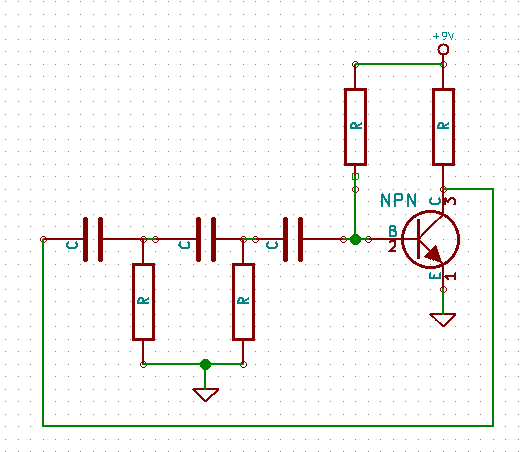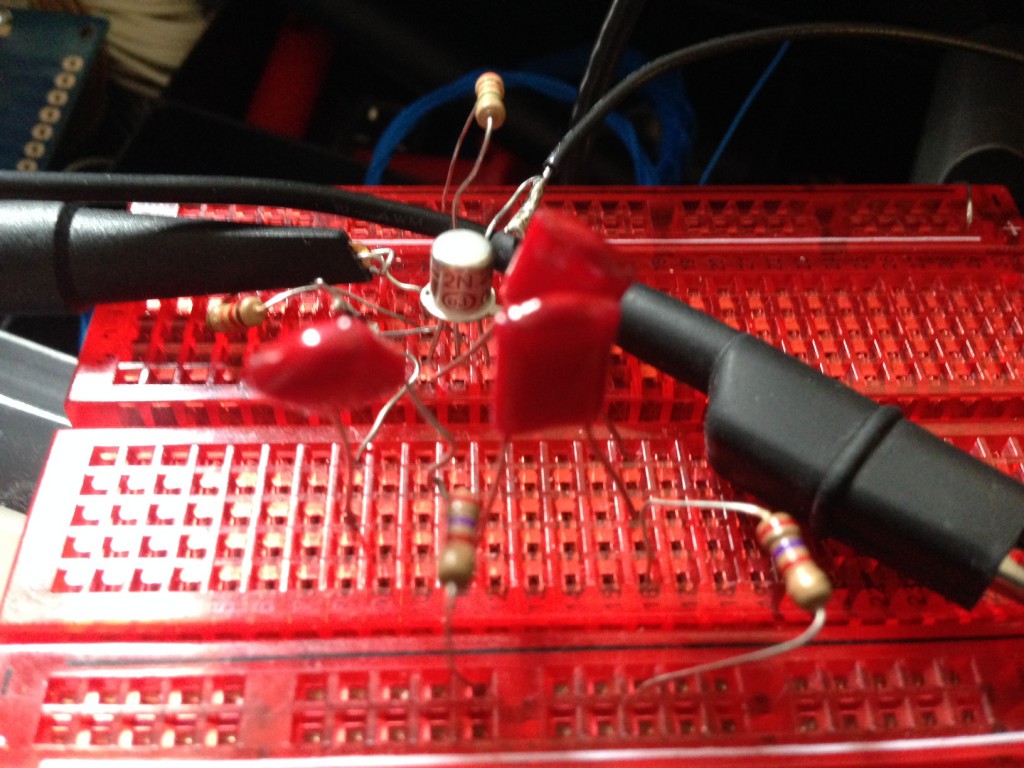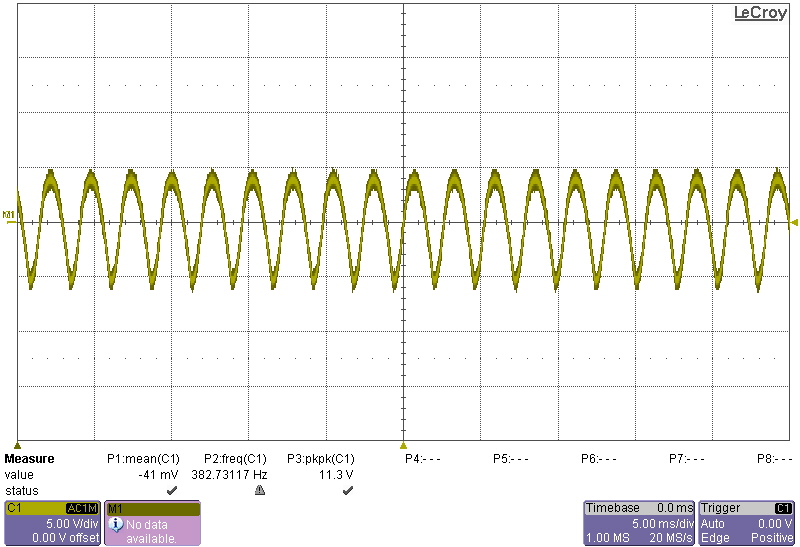Phase Shift Oscillator – High Pass configuration
Yesterday I took a look at a phase shift oscillator. The design I showed used a capacitor in a low pass configuration. I explained why this caused a phase shift allowing us to construct an oscillator.
Today, I tried using the capacitors in a high pass configuration. To understand how this circuit works, we again need to understand how a capacitor in series will cause a voltage phase shift.
The diagram above shows the configuration used, and it’s surprisingly similar to that shown yesterday. However this time when a voltage build up on the top of our capacitor the capacitor will need to draw current though the lower resistor to equalize the voltage. This will take time, causing a delay, and therefore a phase-shift as before. As before the phase-shift is limited to 90degrees (and a larger shift causes more attenuation). The circuit below uses 3 such circuits to generate a 180degree phase-shift:
I built the above circuit using a 2N2222 (a 2N3904 works as well). I used 22nF capacitors. Unlike the previous example these can’t be electrolytic. The resistors on the caps were 2.7K. The resistor going from the supply to the emitter was 12k and from the base to the supply 600k.
And here’s the output:



